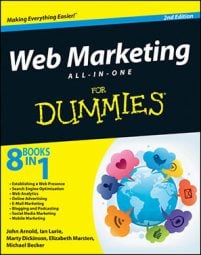The destination and display URLs can impact your online marketing success, so choosing the best ones possible is essential. The destination URL is where the user arrives after clicking your ad. The URL could be the homepage, a product page, or a specially crafted landing page. The choice of a destination URL can affect your visitor’s experience, so keep the following guidelines in mind:
Deliver on the promise of the display URL. Most search engines require the destination URL to match the site that’s advertised in the display URL. This makes for a better user experience and prevents advertisers from spamming users. Suppose you click an ad for women’s sandals (www.womenssandals.com) but arrive on a site that sells diet pills. This site isn’t what you were looking for and leads to user distrust.
Keep in mind your keyword list and ads. If the ad is promoting leather dog collars — a very specific product — you should direct the user to a product page offering different types of leather dog collars or a product page for a specific leather dog collar.
A highly targeted group of keywords can perform even better with a combination of the two. An ad group targeting the keywords studded leather dog collars, for example, would attract more searchers without selection or color features listed, because the features (studded and leather) are built into the keyword itself.
Don’t drop users off on the homepage without considering their experience. You should direct users to a homepage via a PPC ad only for branded or general terms. If your keywords are dog collars, and that is the only product you sell, the homepage is acceptable. If you also sell cat and ferret collars, you want to select the dog category or product page as your destination URL.
The more that users have to click around and search on your site for what they’re looking for, the more likely they are to click the Back button and look elsewhere. You want to direct people to the item or service they’re looking for in the fewest clicks possible.
Often thought of as the place where you plug in your web address, the display URL can be useful in ad optimization as well. Consider the following points as you write your ads:
Starting the URL with http:// and starting it with www. can often yield very different results.
The same goes for beginning the URL with no prefix at all (leatherdogcollars.com, for example).
It may be worthwhile to test adding a keyword to the display URL. The URL www.leatherdogcollars.com/studded, for example, could drive more traffic than www.leatherdogcollars.com.

